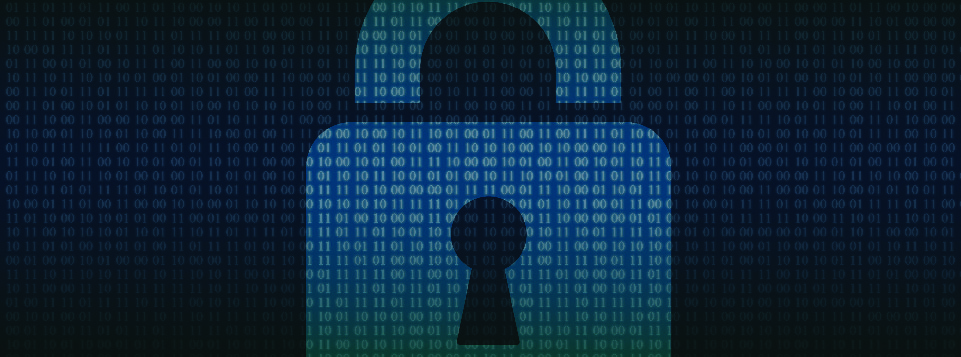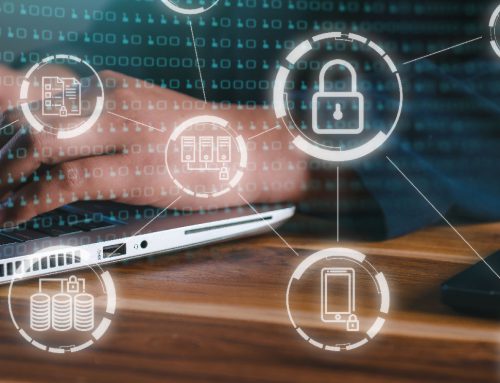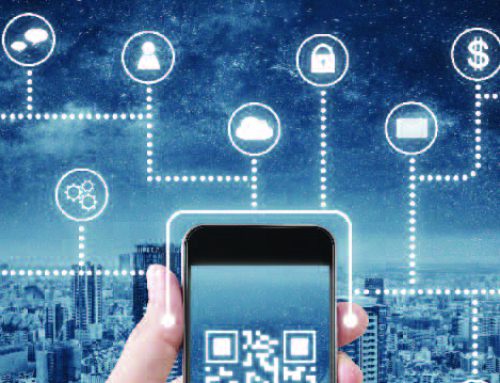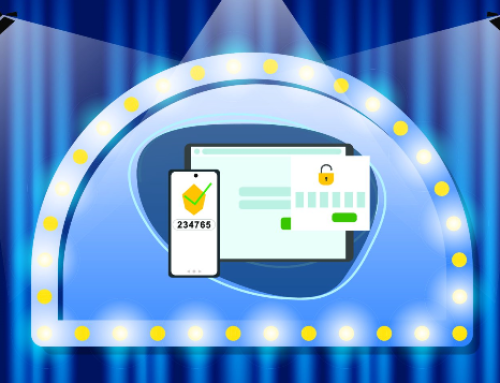Get Familiar with the Cyber Basics
At a time when we are more connected than ever, being “cyber smart” is of the utmost importance. This year has already seen more than a fair share of attacks and breaches, including the SolarWinds and Kaseya breaches as well as high-profile attacks on the Colonial Pipeline and other critical infrastructure. Furthermore, as has been underlined by these recent breaches, cyber-attacks are becoming more sophisticated with more evolved bad actors cropping up each day. Luckily, there are several steps that we can take on a daily basis to mitigate risks and stay one step ahead of malefactors. Here are a few quick tips:
- Enable MFA
Multi-factor authentication (MFA) adds that necessary second check to verify your identity when logging in to one of your accounts. By requiring multiple methods of authentication, your account is further protected from being compromised, even if a bad actor hijacks your password. In this way, MFAs make it more difficult for password cracking tools to enable attackers to break into accounts. - Use strong passphrases/password manager
This may seem obvious, but all too often securing strong passphrases/password managers is overlooked. People spending more time online during the pandemic has certainly contributed to more bad actors prowling for accounts to attack. Using long, complex, and unique passwords is a good way to stop your account from being hacked, and an easy way of keeping track and remembering your passwords is by using a password manager. - Perform software updates
When a device prompts that it’s time to update the software, it may be tempting to simply click postpone, and ignore the message. However, having the latest security software, web browser, and operating system on devices is one of the best defenses against online threats. So, don’t wait – update. - Do your research
Common sense is a crucial part of maintaining good online hygiene, and an intuitive step to stay safe online is to do some research before downloading anything new you are downloading to your device, such as apps. Before downloading any new learning app on your device, make sure that it’s secure by checking who created the app, what the user reviews say, and if there are any articles published online about the app’s privacy and security features. - Check your settings
Be diligent to double check your privacy and security settings and be aware who can access your documents. This extends from Google docs, to Zoom calls, and beyond. For meetings on Zoom, for example, create passwords so only those invited to the session can attend, and restrict who can share their screen or files with the rest of the attendees.
Being cyber smart and maintaining stellar online hygiene is the best way to protect yourself and others from cyber-attacks. No single tip is foolproof but taken together they can make a real difference for taking control of your online presence. Following these tips is also easy, and free. By taking preventive measures and making a habit of practicing online safety, you can decrease your odds of being hacked exponentially – and prevent lost time and money, as well as annoyance.
Fundamentals for Phishing Defenses
From ransomware to SolarWinds, the cybersecurity space has been as hectic as it has ever been over the last 12-24 months. However, for all the emerging threats and news that are cropping up on the horizon, phishing – one of the oldest pain points in cybersecurity – is continuing to quietly wreak havoc and is as big of a threat as it has ever been.
Despite often being overlooked in terms of hype, phishing has been a mainstay in the cybersecurity threat landscape for decades. In fact, 43 percent of cyberattacks in 2020 featured phishing or pre-texting, while 74 percent of organizations experienced a successful phishing attack last year alone. That means that phishing is one of the most dangerous “action varieties” to an organization’s cybersecurity health. As a result, the need for proper anti-phishing hygiene and best practices is an absolute must.
With that in mind, here are a few quick best practices and tips for dealing with phishing threats.
- Know the Red Flags
Phishes are masters of making their content and interactions appealing. From content design to language, it can be difficult to discern whether content is genuine or a potential threat, which is why it is so important to know the red flags. Awkward and unusual formatting, overly explicit call outs to click a hyperlink or open an attachment and subject lines that create a sense of urgency are all hallmarks that the content you received could be potentially from phish and indicate that it should be handled with caution. - Verify the Source
Phishing content comes in a variety of ways; however, many phishes will try to impersonate someone you may already know – such as a colleague, service provider or friend – to trick you into believing their malicious content is trustworthy. Don’t fall for it. If you sense any red flags that something may be out of place or unusual, reach out directly to the individual to confirm whether the content is authentic and safe. If not, break-off communication immediately and flag the incident through the proper channels. - Be Aware of Vishing and Other Phishing
As more digital natives have come online and greater awareness has been spread about phishing, bad actors have begun to diversify their phishing efforts beyond traditional email. For example, voice phishing – or vishing – has become a primary alternative for bad actors looking to gain sensitive information from unsuspecting individuals. Like conventional phishing, vishing is typically executed by individuals posing as a legitimate organization – such as a healthcare provider or insurer – and asking for sensitive information. Simply put, it is imperative that individuals be wary of any sort of communication that asks for personal information whether it be via email, phone, or chat – especially if the communication is unexpected. If anything seems suspicious, again, break-off the interaction immediately and contact the company directly to confirm the veracity of the communications. Phishing may be “one of the oldest tricks in the book,” but it is still incredibly effective. And although it may be hard to spot when you may be during a phishing attempt, by exercising caution and deploying these few fundamentals, individuals and organizations more broadly can drastically mitigate the chances of falling victim to a phishing attack
Why You Should Consider a Cyber Career
Cybersecurity is one of the hottest sectors today, with new threats and challenges emerging each day. And with that, there is a huge push being undertaken by both business and education sectors to attract individuals toward a degree and career in cyber. Interested in joining this exciting new workforce? Here are a few reasons why pursuing a degree and career in cyber might be right for you.
- Hot Job Market
To say that the cybersecurity jobs market is hot would be a huge understatement. According to the U.S. Bureau of Labor Statistics, the job market for information security analysts will grow by 32 percent by 2028 – making it one of the fastest growing job sectors – while Cybersecurity Ventures has found that there will be 3.5 million unfilled cybersecurity jobs in 2021. This means that cybersecurity professionals are among the most in-demand around the world and will be for years to come. - Infinite Room for Personal and Professional Growth
Beyond just the ability to get a cybersecurity job, thanks to an ever-growing set of career tracks, cybersecurity offers a variety of different options for professionals to find a position that fits nicely with their own interests. Cybersecurity professionals work in everything from compliance to stress testing cyber defenses and software, so there are virtually limitless ways that professionals can apply their skills and look to grow them. - Investment in advanced cybersecurity pays for itself
Due to the shortage of cybersecurity talent in the workforce, businesses and educational institutions are constantly rolling out new avenues by which to make cybersecurity careers more affordable. For example, new grants and scholarships are now becoming available each day for individuals interested in cybersecurity careers, while many businesses are beginning to offer tuition reimbursement or other financial perks. This means that a degree in cybersecurity may be much more affordable than you originally thought. - Graduate Growth
In addition to interesting “on the groundwork” that cybersecurity professionals get to take-on every day, there is also a growing selection of highly tailored cybersecurity graduate programs that can further academic knowledge in cybersecurity as well. For example, graduate degrees ranging from Applied Cryptography to Network Vulnerability and Detection are now being offered through colleges and universities nationwide. Additionally, as part of this deep-dive, cybersecurity professionals will also get the opportunity to network with other students from various backgrounds allowing them to open further opportunities for future positions or businesses.
Prioritizing Cybersecurity in a Hybrid Workplace
Currently, employees are more connected than ever. The hybrid workplace is here to stay, and for employees, this means relying on connected devices from their home office setups. According to recent data, smart home systems are set to rise to a market value of $157 billion by 2023, and the number of installed connected devices in the home is expected to rise by a staggering 70% by 2025. In this new normal where smart devices and consequently online safety are a must, here are some tips for securing those devices.
- Remember smart devices need smart security
Make cybersecurity a priority when purchasing a connected device. When setting up a new device, be sure to set up the privacy and security settings on web services and devices bearing in mind that you can limit who you are sharing information with. Once your device is set up, remember to keep tabs on how secure the information is that you store on it, and to actively manage location services so as not to unwittingly expose your location. - Put cybersecurity first in your job
Make cybersecurity a priority when you are brought into a new role. Good online hygiene should be part of any organization’s onboarding process, but if it is not, then take it upon yourself to exercise best practices to keep your company safe. Some precautions include performing regular software updates and enabling MFAs. - Make passwords and passphrases long and strong
Whether or not the website you are on requires it, be sure to combine capital and lowercase letters with numbers and symbols to create the most secure password. Generic passwords are easy to hack. If you need help remembering and storing your passwords, don’t hesitate to turn to a password manager for assistance. - Never use public computers to log in to any accounts
While working from home, you may be tempted to change scenery and work from a coffee shop or another type of public space. While this is a great way to keep the day from becoming monotonous, caution must be exercised to protect yourself and your company from harm’s way. Make sure that security is top of mind always, and especially while working in a public setting, by keeping activities as generic and anonymous as possible. - Turn off Wi-Fi and Bluetooth when idle
The uncomfortable truth is, when Wi-Fi and Bluetooth are on, they can connect and track your whereabouts. To stay as safe as possible, if you do not need them, switch them off. It’s a simple step that can help alleviate tracking concerns and incidents.
These are just a few simple steps towards achieving the best online safety possible. Staying safe online is an active process that requires constant overseeing at every stage – from purchasing and setting up a device, to making sure that your day-to-day activities are not putting anyone at risk. By following these steps, you are doing your part to keep yourself and your company safe from malicious online activity.
If you’ve read this post and you’re thinking you need help with keeping your employees trained from cyber threats, contact us to get professional help!











